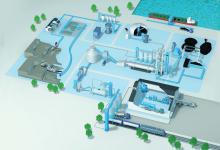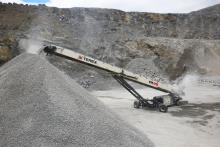
Global innovator in bulk handling technology
The Martin heavy-duty (HD), medium-duty (MD) and light-duty (LD) impact cradles feature a bed of steel angles lined by energy-absorbing impact bars with a top layer of low friction, ultra-high molecular weight (UHMW) plastic.
The result is said to be longer lasting conveyor belts and components, with less fugitive material and a safer work area.
“Fine material discharged from a height can have just as much force as a coarse load,” says product engineer Daniel Marshall.
“Without proper impact absorption and distribution, all of that force is exerted on the belt, essentially crushing it against a rigid surface underneath. The impact beds absorb the energy, so the belt doesn’t have to. It also creates a flat edge for the apron seal, to prevent spillage and fugitive dust.”
The Martin Engineering cradles are designed to be located at transfer points of receiving conveyors, under the hopper and chute box, close to the tail pulley. Depending on the force of the discharged material, they can possess different structural qualities.
“Almost all bulk material, no matter the settled weight, has some form of impact on receiving belts at transfer points. Left uncontrolled, the constant force and spillage on the belt can bring about gouging and fraying, which can cause misalignment that leads to expensive system damage and a potential workplace hazard,” says Marshall.







